Decking costs – a guide to pricing up a stylish garden deck
What decking costs should you be aware of? If you’re thinking about adding a deck to your outside space, here’s everything you need to know


Decking costs can vary quite substantially depending on the quality of wood you go for, whether you have it installed professionally, how large the deck is and whether you want anything incorporated like steps, lighting and hot tubs. There are also maintenance costs to consider, among other practical considerations.
'Prices of wood are always fluctuating; supply chain is a real issue,' says Jeff Salcito, Owner & Principle Designer of Huntergreen, a garden design and build company located in Brooklyn, NY. 'So we often have to reprice jobs if the original quote was given a year earlier or even just months earlier.'
Deck ideas can suit any style of home and garden, whether you have a modern rooftop overlooking the city or a grand house in the country. Decking provides an area of separation from the rest of the space and a comfortable spot to host BBQs and parties.
''It’s a known fact that decking will add value to your property too,' explains Nick Whiley, Project Director of Trekker, 'therefore it should be seen as an investment.'
The average price for a deck is roughly $6,000 but it varies massively between a couple of thousand dollars if you do it yourself with affordable materials, to upwards of $10,000. Although some prices can tip over (and under) that. If you give it a go yourself, which is certainly doable, you'll save yourself the labor cost while burning a load of calories!
If you’re thinking about adding a new deck, keep reading. We’ve spoken to experts to find out the price breakdowns of decking costs.
Everything you need to know about decking costs
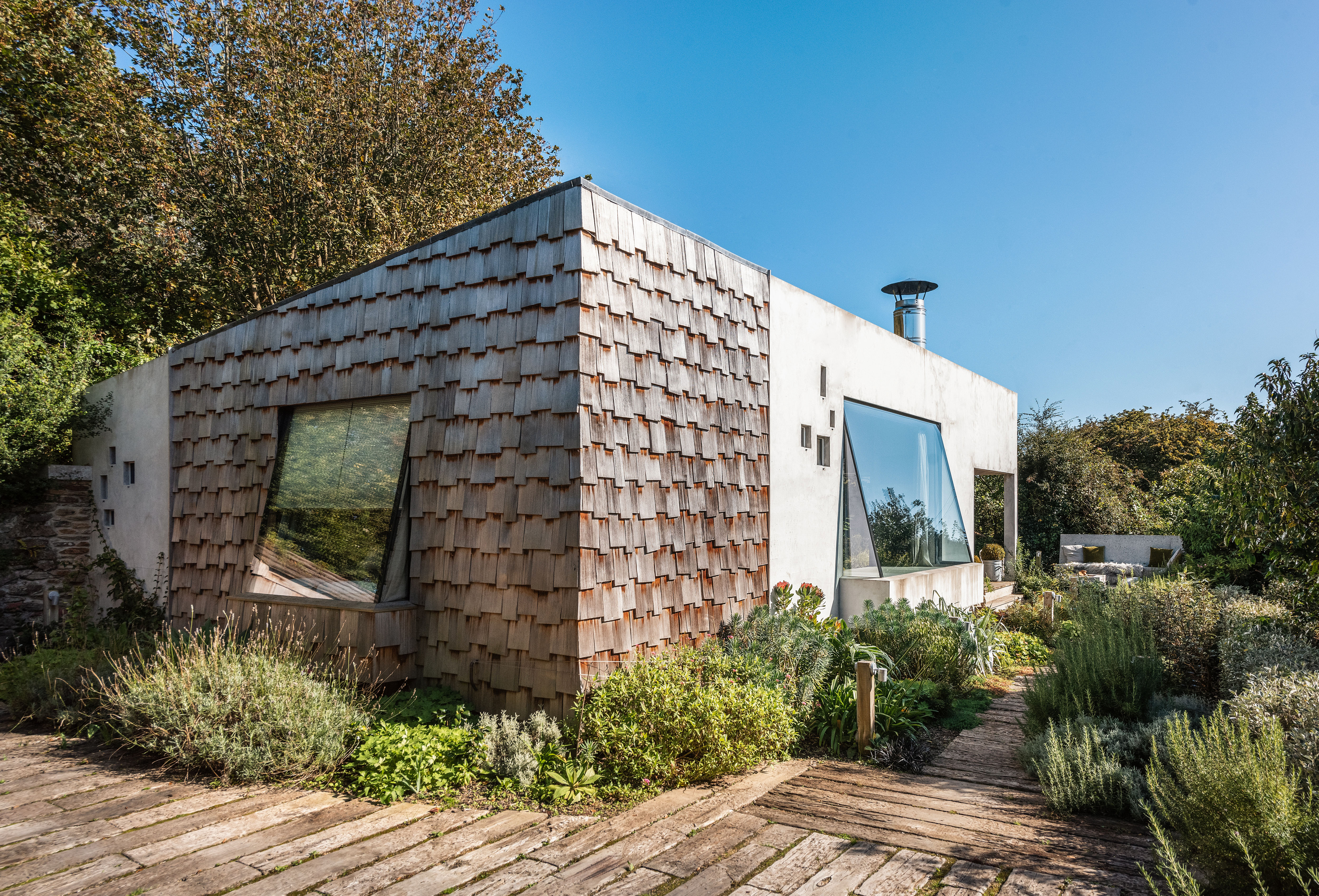
There are many variables when it comes to pricing up decking and that includes the materials, any design involved, time and even location.
Here is what you need to consider when planning to add a deck:
1. Location
'Building anything in the city takes more logistics and money than building in the suburbs,' explains Jeff from Huntergreen. 'Materials are subject to more tax in New York City than say 10 miles out in Long Island and it takes four times the labor and logistics to get the materials to the job sites, unloaded and through narrow backyards.'
'Demo and removal of old decks or fences in the city is also a considerable cost. So clients who move here from other places and are used to suburban prices often scratch their heads,' he adds.
2. Roof garden ideas vs ground
Consider how your site might affect how a garden deck is installed, and therefore the cost too. 'We do both ground and rooftop decks which are obviously very different projects,' Jeff says. 'Rooftop decks either require weight distributing risers or, if the design has very heavy elements it may require the deck to be built across steel beams. The cost of a crane alone to hoist these materials can be thousands a day.'

3. Materials
Your choice of decking materials will likely have the biggest effect on the cost per square foot, especially when comparing a basic pressure-treated wood deck with hardwood timber styles.
'Generally, we build the decks with pressure-treated framing and posts, and kit out the tops and sides with ipe, cedar or mahogany,' Jeff adds. 'Ipe is a South American hardwood and cedar and mahogany are sourced from Canada or the Western US.'
'There used to be a great price difference between all three. Ipe used to be almost double the price of cedar but because of supply chain issues and change in tariffs the difference in costs is much less,' he explains.
4. Maintenance
Your deck's potential costs are concluded once it's installed. Think about maintenance requirements too or your deck won't last and cost more in the long run.
'Traditional wooden decking generally lasts up to 10-15 years but requires annual maintenance, whereas composite or plastic decking can last anywhere from 25 to 30 years and requires no maintenance,' says Chris Moorhouse, Category Director at Wickes. 'Composite decking is also easier to care for,'
'Oiling of ipe is easy to do yourself but is an expense if you are looking to have someone do this for you,' adds Jeff. 'It can cost several thousand dollars each year to professionally clean and oil an entire backyard deck built in ipe. If you want ipe to keep its rich oiled color, you must oil it every year. Otherwise, it dulls to a silver-grey as does cedar.'
How much does a deck cost?
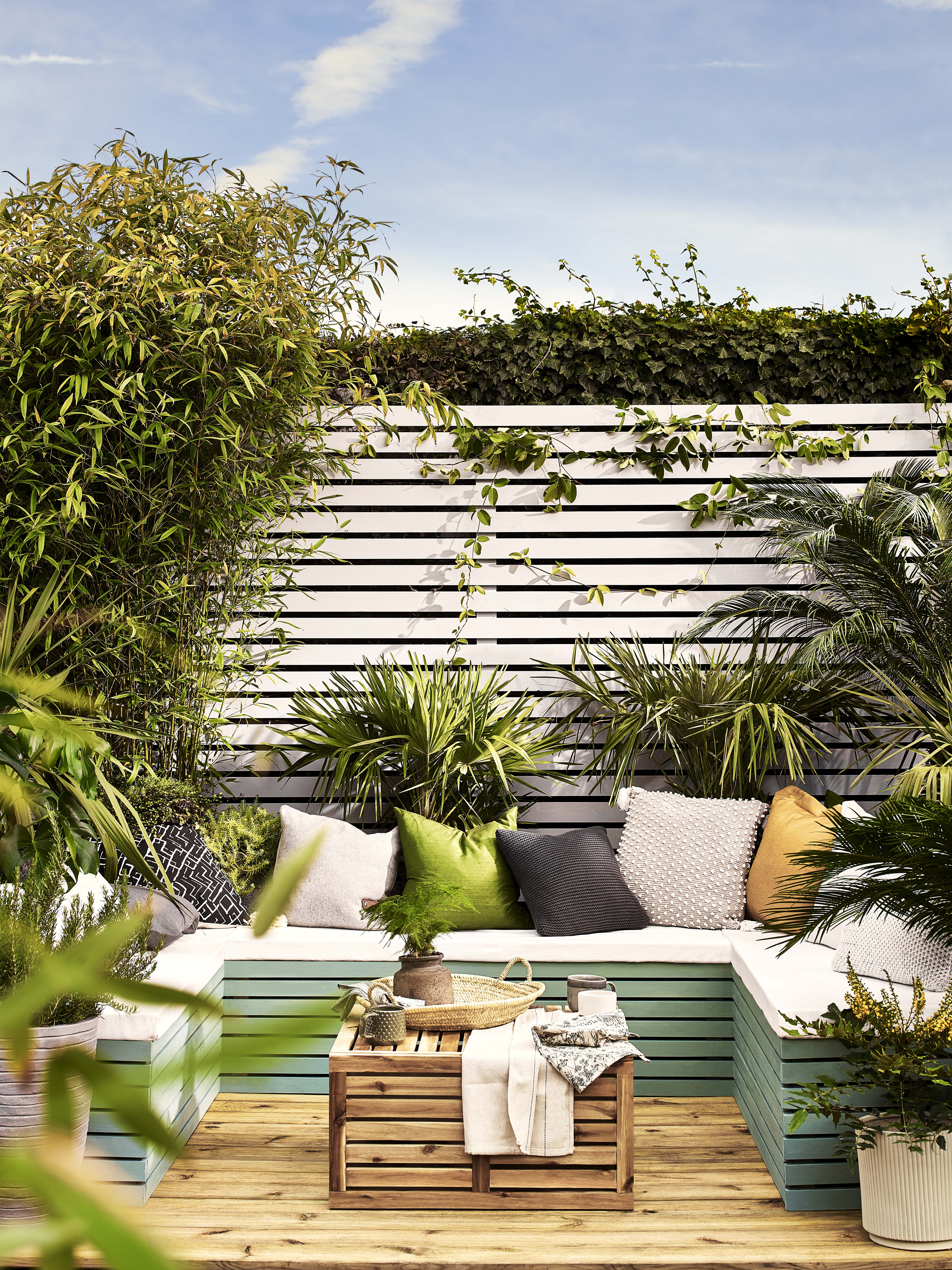
The cost of decking is dependent on the type of wood you go for, which can vary from tropical hardwoods, softwoods, pressure-treated woods, composite and even PVC decking which imitates wood. Discover more detail about the various decking materials before deciding on which wood would work best for your space and the amount of upkeep you're prepared to deal with.
1. Pressure-treated wood
'Pressure-treated wood requires regular maintenance. But with care, including power washing, sanding and regular re-staining, you can extend the lifespan of your pressure-treated deck. Pressure-treated wood is also quite affordable, available at around $3-$6 per square foot,' says Nathan Fell, Founder of Nathan Fell Architecture.
Total cost: $3-$6 per square foot
2. Tropical hardwoods
Tropical hardwoods are things like Ipe, Cumaru, and Tigerwood. A more expensive and luxurious choice compared to pressure-treated wood, tropical hardwoods tend to be grainy, hard, and durable, as well as naturally resistant to issues like rotting and insects. Plus, using natural materials is one of the big garden trends for 2022. But it's an expensive choice (around $8 to $12 per square foot), and because they are fairly dense, drilling holes into them is trickier.
Total cost: $8 to $12 per square foot
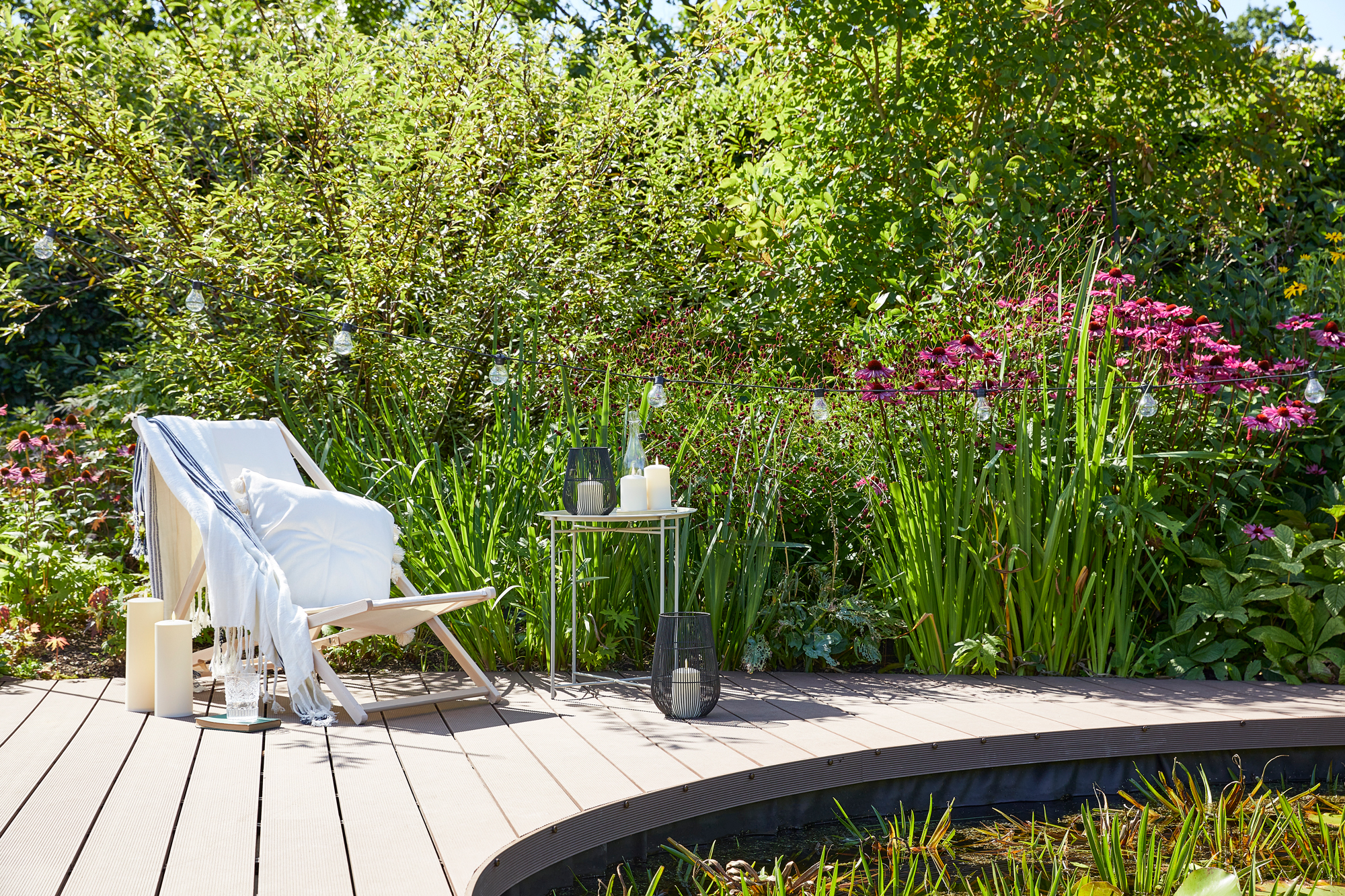
3. Composite
This type of decking is growing in popularity fast as it won't warp, splinter or be affected by rot or insects. Though be aware that mold and mildew can still grow on it in damp spaces. Since composite decking is partially wood, some composites may end up showing signs of decay. It's not always the cheapest option and prices vary quite substantially, from around $8 to $12 per square foot. Try and choose a reputable, high-quality company if you can.
Total cost: $8 to $12 per square foot
4. Softwoods
You can find softwoods like cedar for around $9 - $11.50 per square foot but there are varying types of cedar: the four best grades of cedar to use for decking are architect clear, custom clear, architect knotty, and custom knotty – the higher the quality you choose, the more it’s going to cost you.
Total cost: $9 - $11.50 per square foot
3. PVC
PVC decking is more expensive – around $10 - $15 per square foot and most PVC decking has less recycled content so it's not a great sustainable living option.
Total cost: $10 - $15 per square foot
What is the cost of decking per square foot?
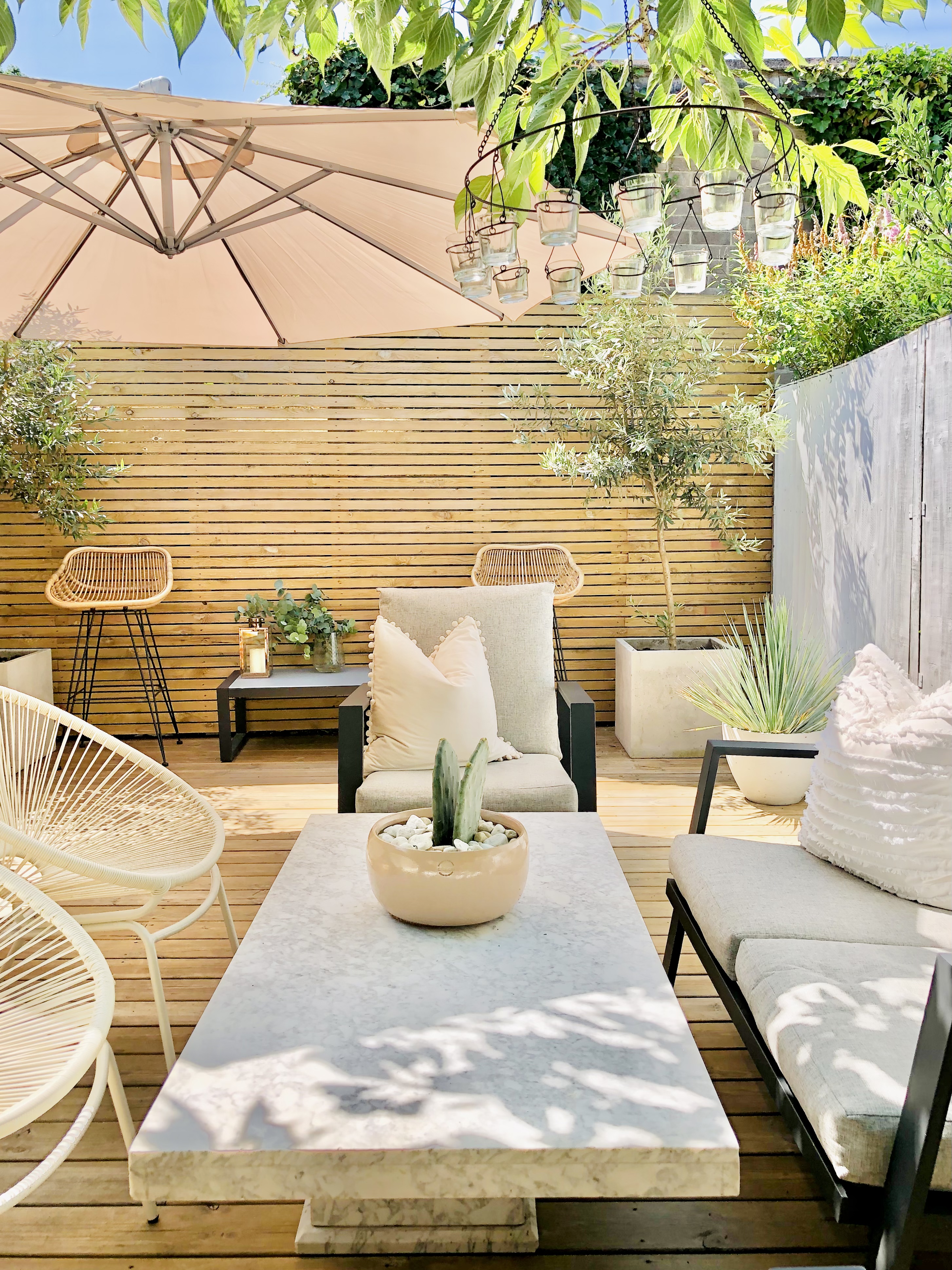
Including all materials and labor, a standard deck will cost roughly $30-$60 per square foot. Building a small deck typically costs around $4,000 on average, a mid-sized deck will set you back around $7,000, whereas the average price for a large deck can cost over $10,000. That means, for a standard 14 x 20 foot deck, you can expect to pay around $6,000. If you decide to build the deck yourself, you'll just have the materials to pay for, which range from $3 to $15 per square foot on average.
Once your deck is installed, it's important to keep it in good condition so it lasts for as long as possible, making sure you get more for your money over time. 'Keep an eye on any gathering puddles or standing water as these will quickly cause mold and mildew across the surface,' says Chris Moorhouse. 'When installing, try to keep at least 6 inches of space between the patio and decking so there is enough airflow (this will also reduce mold growth).'
'Regular maintenance will also help to keep the boards looking fresh all year round. Sweep the decking as often as needed, and unclogging the gaps between the boards from grass, leaves and other debris will brighten up your new deck. Lastly, with the incoming summer garden drinks, make sure if there are any spillages, they are cleaned up right away to prevent stains and sticky patches,' he adds.
Is decking cheaper than paving?
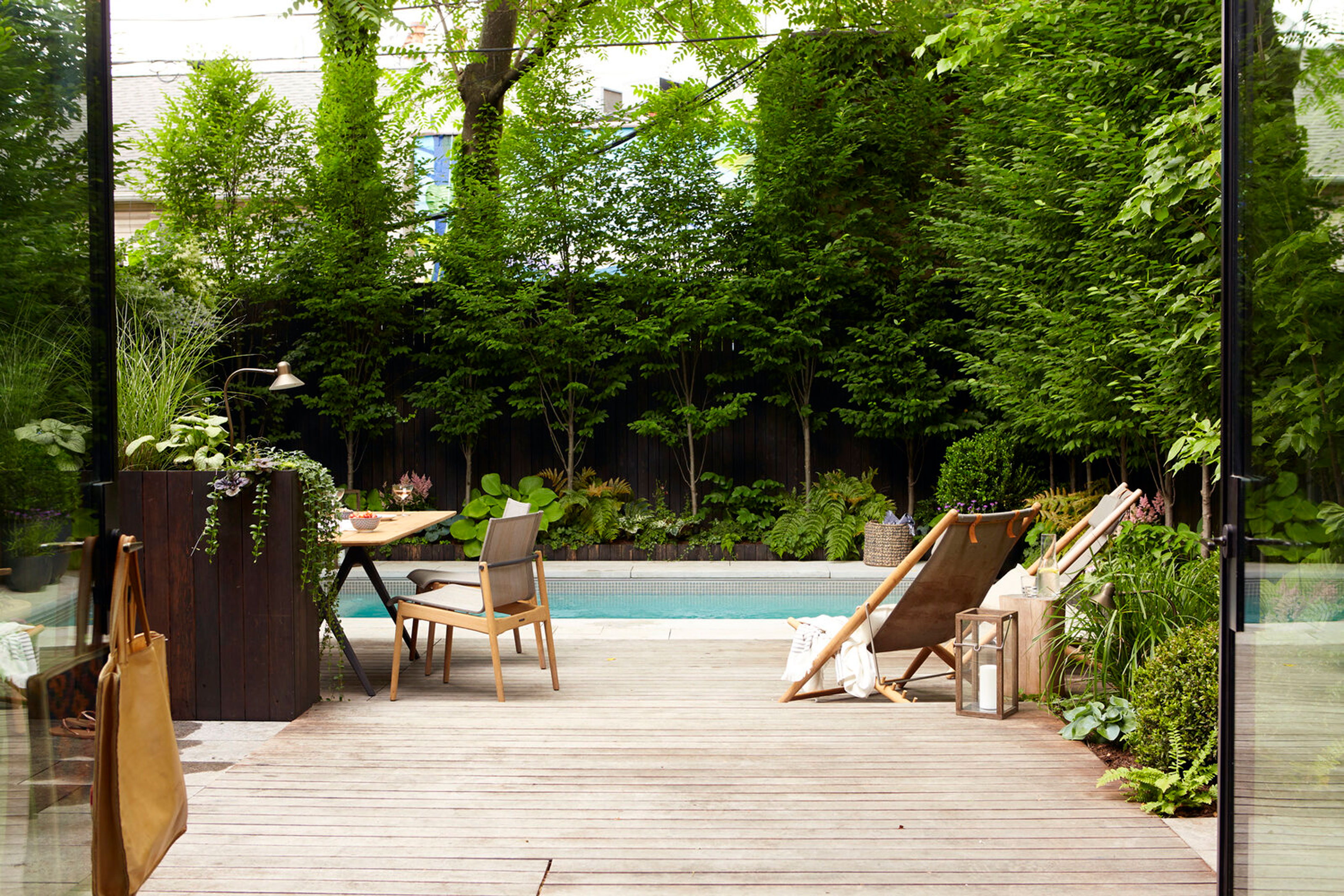
Decking is more often than not wood, whereas paving and patio ideas are usually stone and gravel and there are many elements that effect the cost of installing paving and patios, just like with wooden decking. There are the dimensions to consider, but also the materials you choose and the design.
You can save on the cost of installing a patio if you lay it yourself, but if you want to have paving installed professionally, then it can range from around $2,000 to upwards of $10,000 for a luxury finish, including labor costs for both the preparation of the area and the laying of the pavers – remember that the larger the patio the longer the job will take. You might need to also consider landscaping the wider area and adding drainage beneath the patio.
Most homeowners spend $8 to $20 per square foot for a patio install, depending on the type of material you choose. Paving is probably a slightly cheaper alternative to decking, at an average cost of roughly $4,000 compared with $6,000 for decking, but there's not much in it, and again, there are several variables to consider.
Be The First To Know
The Livingetc newsletters are your inside source for what’s shaping interiors now - and what’s next. Discover trend forecasts, smart style ideas, and curated shopping inspiration that brings design to life. Subscribe today and stay ahead of the curve.

As the Houses Editor on Livingetc, Rachel has been obsessed with property ever since she was a kid. With a diploma in interior design and more than a decade working on interior magazines under her belt, she feels very at home sourcing the best contemporary houses the world has to offer for Livingetc. It's not just the day job either, she admits she's spent a scary amount of her own time researching schemes for her own renovations - scrolling Instagram, stalking Rightmove and Modern House, flicking through magazines and snooping in other peoples' windows - so she really does live and breathe houses on a daily, if not hourly, basis. Before Livingetc, Rachel had a stint finding homes for Ikea Family magazine where she was lucky enough to gallivant around the world on shoots meeting and interviewing interesting people, all with a very keen eye for blending high-end design with everyday items from Ikea. It inspired her to not be afraid of mixing new and old, expensive and affordable, vintage and modern and so Rachel's current Victorian terrace in north London is very much an updated, contemporary take on a period property; think open-plan modern kitchen with concrete floors, feature fireplaces and her grandmother’s paintings on the walls. Rachel is currently crushing on reeded glass, large gingham prints, squishy curved furniture; like Buchanan Studio’s Studio chair, and vintage wall sconces; she especially adores Retrouvius for sourcing antique finds and feels inspired by Lonika Chande, Beata Heuman and Matilda Goad and already can’t wait to start planning her next home, wherever that might be.
-
 Burl Wood Decor Is 2025’s Most Coveted Comeback — Here’s How to Get the Storied Swirls for Less
Burl Wood Decor Is 2025’s Most Coveted Comeback — Here’s How to Get the Storied Swirls for LessIrregularity is the ultimate luxury, but you don’t need an antiques dealer to find it
By Julia Demer Published
-
 5 Garden Features That Instantly Add Value to Your Home — While Making Your Outdoor Space More Practical, too
5 Garden Features That Instantly Add Value to Your Home — While Making Your Outdoor Space More Practical, tooGet to know all the expert tips and tricks for making your backyard a standout selling point for your home.
By Maya Glantz Published